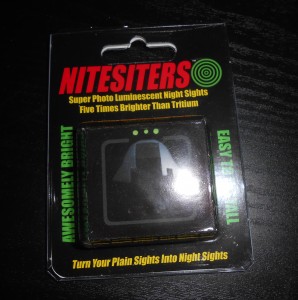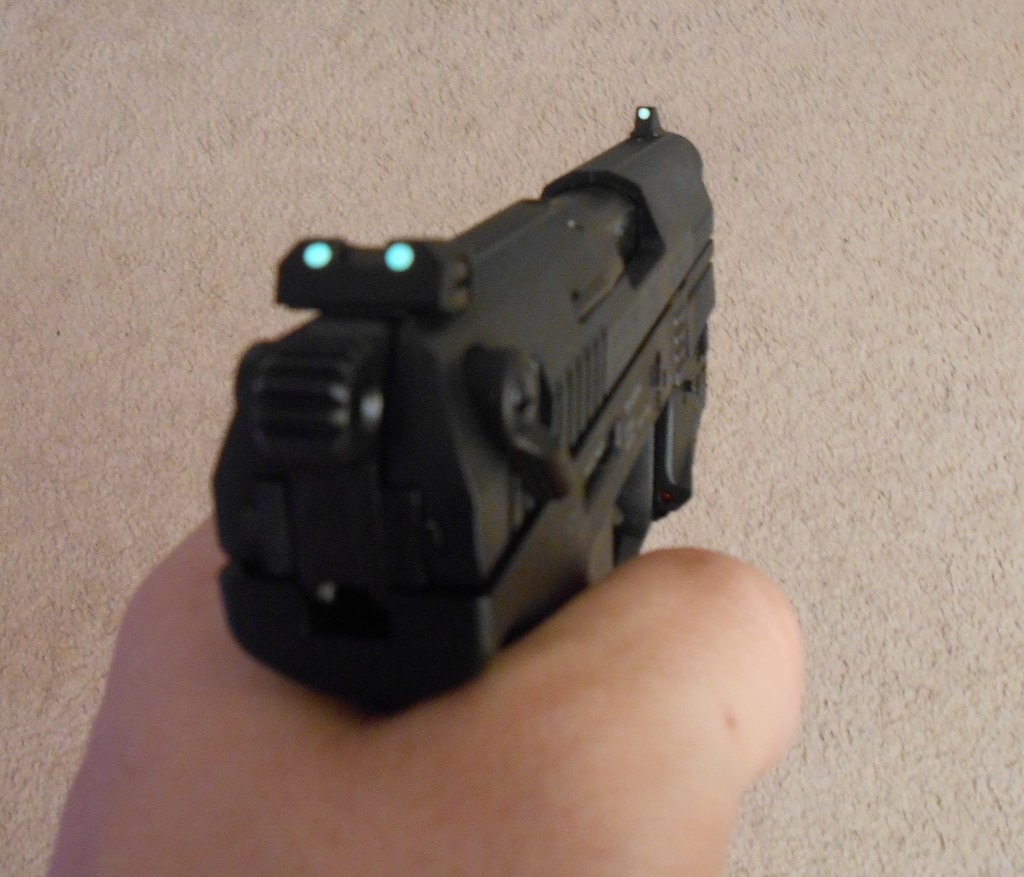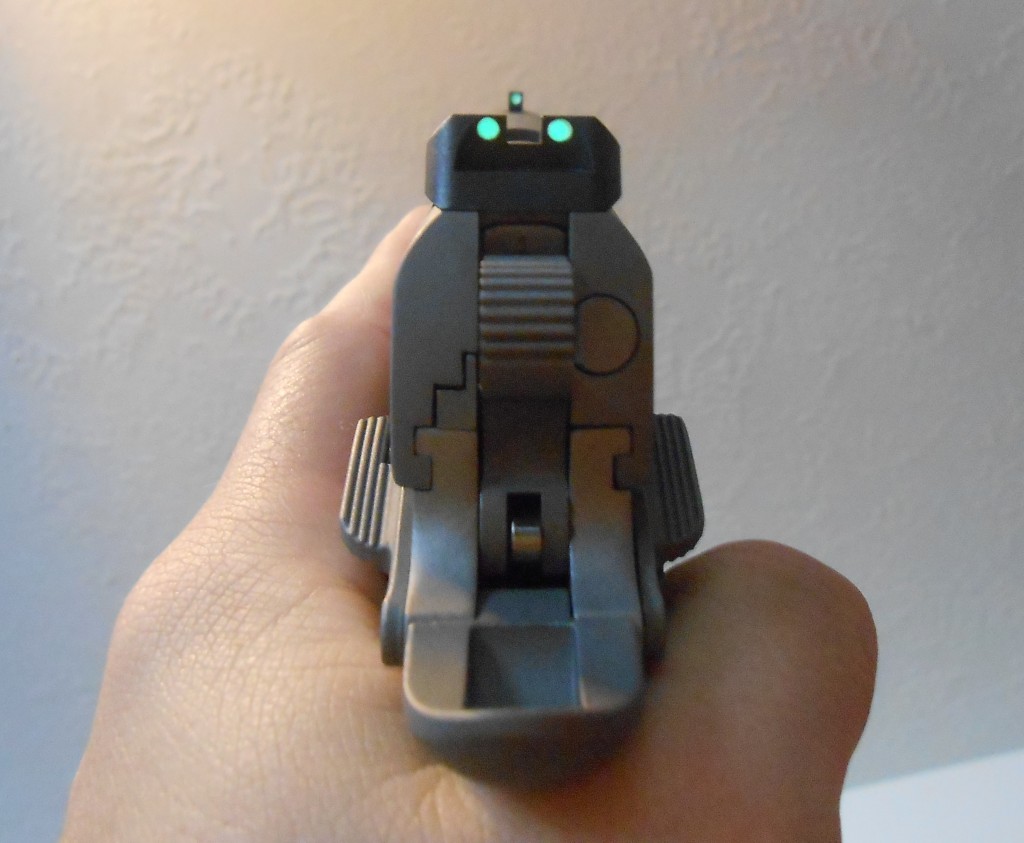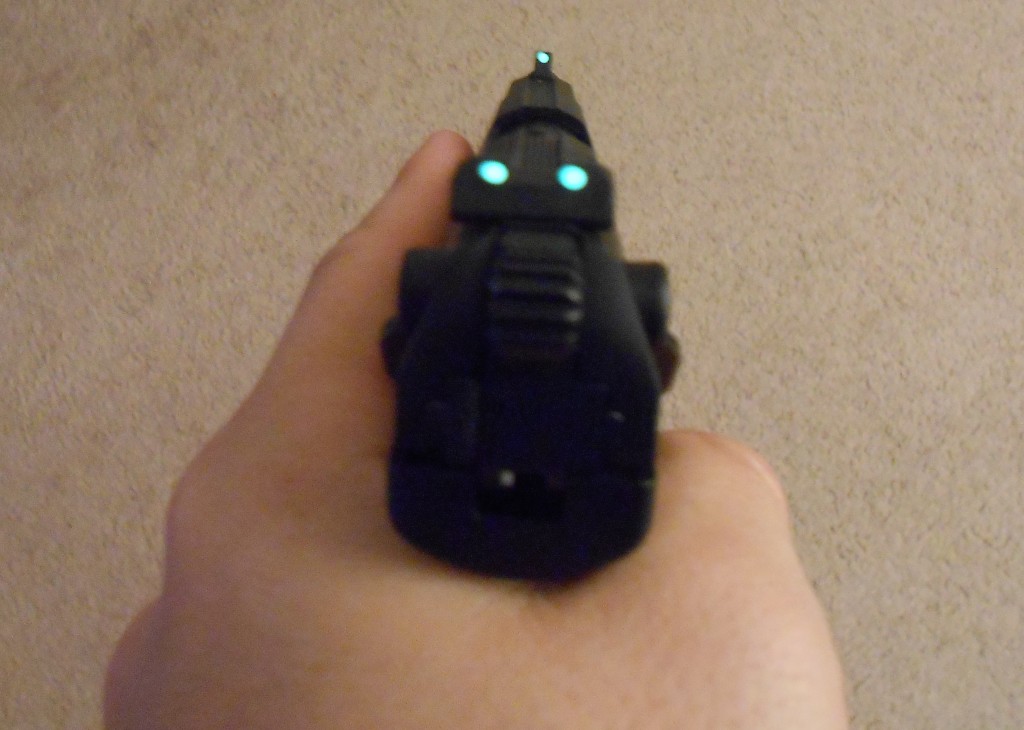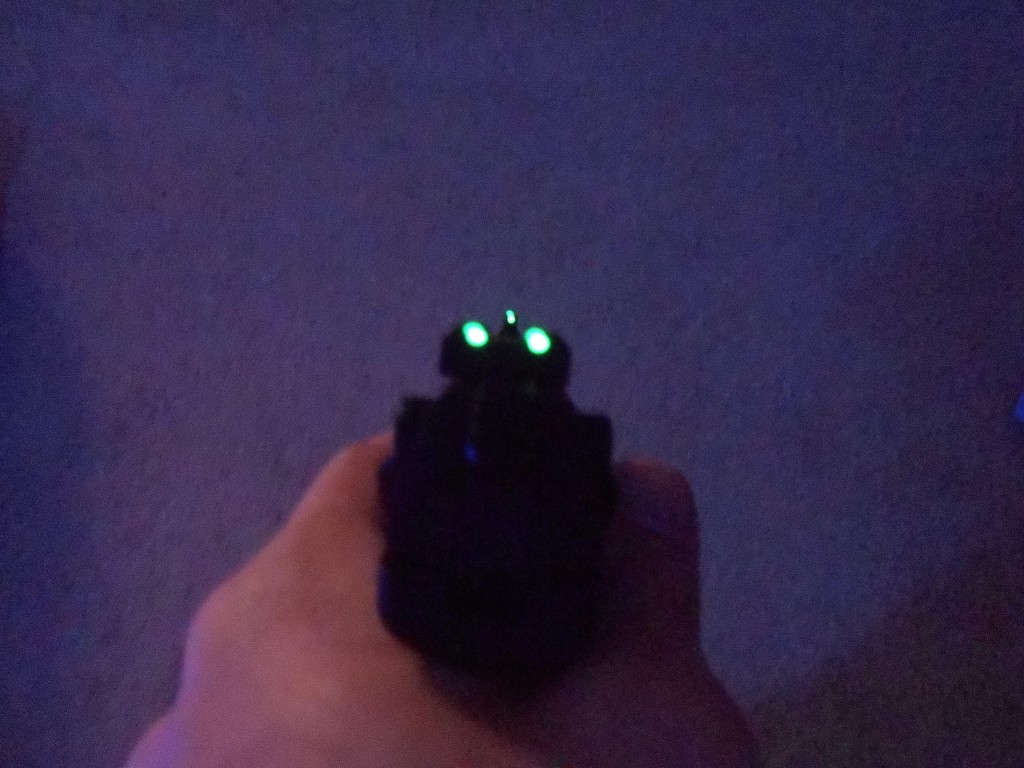Right, so you’ve got yourself a new handgun and think “What if I had to shoot this thing in low light conditions. Well, even with a flashlight / weapon light, all I’d get would be a bright area in front of me, but my firearm would still be pretty dark- hell, darker because of the contrast. Wouldn’t it be just swell if the sights kind of glowed a little bit for me, so I could line ’em up well when my weapon is bathed in shadows? I wonder if anyone has ever thought of this before!” Well yes. Yes they have. Quite extensively.
The problem? Those things are expensive! Who wants to drop a significant percentage of the price you paid for the handgun on some sights that glow in the dark, when I might never even shoot in low-light conditions anyway. To put people even more on the fence, during bright conditions those dots aren’t even going to be as effective as the bright white markings on your OEM sights, am I right?
Well, some industrious fellow decided to address all of your concerns by coming up with an alternate solution to a couple of miniature radioactive isotope filled vials- Why not just use a tiny version of those glow-in-the-dark stars that kids put on their ceiling?
So, granted, “glow in the dark” tech has come a long way since those glow in the dark plastic cars and Halloween masks of the 80’s and 90’s, or at least some of the products available on this awesome site would make you think it. But is it suited to replace the always-on consistency of tritium firearm sights which last years before dimming out and needing replacement?
Well No. No it isn’t.
So, to step back a bit and actually show you how these work (and prove I actually gave the things a fair shake), let’s see what comes in the kit, priced at $11.98.
The basic premise here is: Here are some little dots, made up of photoluminescent paint over reflective material (to pick up and reflect any ambient light back through the luminescent layer), and a coating of clear polymer to protect it. On the back side, is industrial adhesive. What really qualifies an adhesive as industrial? I guess that it’s used in any industry, including the ‘cheap glow in the dark stickers for your firearm’ industry. You get 8 dots per kit, and peel ’em off of the clear plastic film using the provided pre-rusted razor blade, and use the included compact tactical toothpick to assist in positioning, and if necessary, cramming that little sticky dot into the dimple on your handgun’s sight (as I had to do with the sights on my Colt Commander). Just to be thorough, the kit comes with a couple of tiny sealed alcohol swaps to clean your sights prior to mounting. Also included is a tiny tube of Crazy Glue, in case the industrial adhesive isn’t quite being industrious enough.
And it wasn’t. After the first trip to the range, my 1911 had lost it’s front Nitesiter. After this, as much as I was loathe to use superglue on ANY part of my $1k Colt, per the directions, I gave that a shot. Let it never be said I don’t do crazy things for you people! The results of my next range trip: Front sight stayed put, rears were both gone. Not wanting to waste all 8 on one gun, I decided to hold off and see how that front one did with the superglue.
…it lasted another 100 rounds of 230gr FMJ before it went MIA. So as far as I’m concerned, use of these things on a “real” handgun is out of the question.
That being said, I went ahead and mounted 3 of the 4 remaining ones on a Walther P22, as this would give the added benefit of slightly larger white dots even in daylight. The sights on the Walther were flat already, and not dimpled, so I figured that would help as well, and it seems to have- as these have managed to stay put after one trip shooting 150 rounds of CCI Mini-Mag. Edit: They were all gone by the end of the following range trip.
So, they work on a low-recoil toy with optimum existing mounting conditions, but how does the brightness compare with tritium? Well, the website would have you believe that they compare like so: “5 minutes of sunlight, close lamp light, or Ultraviolet light is all it takes to provide many hours of luminosity.”
And honestly, they do. For about 30 seconds after having a UV light flash them briefly (tested using a fluorescent blacklight on the Walther P22), or have a bright tactical light (as used in pictures of the Colt) shined on them for about 20 seconds. After that, they peter out pretty quick, to just barely noticeable for about an hour. Seriously, BARELY detectable. Then after about 2-3 hours, they’re completely inert. Yes- the website specifically said “5 minutes of sunlight, close lamp light, or Ultraviolet light” was “all it takes” to get it going- well I gave it that chance too, but if someone breaks into my house in the middle of the night, or I pull my firearm out of a holster under my car seat at night, I doubt I’m going to have 5 minutes to charge my sights. But just to be diligent here, I left them out to gather sunlight for a few days and nights, and kept checking them over a couple of days, just to write off them having to break-in or something, and giving them adequate light to charge. No change. Just for the record, all of the shots taken of these glowing were taken within 20 seconds of charging them for at least 30 seconds.
So, the verdict? If you really need glowing dots to help with a low-light sight picture, stick to the tried and true, get yourself some Trijis or Mepros, and save the glow in the dark stickers for your kids’ bedroom ceiling planetariums.
Edit: In updating this article, I noticed a new similar product that seems to have better reviews, and seems to be a paint, so maybe that would correct the adherence problem. Maybe I’ll give it a review to see if it does any better than these did.
